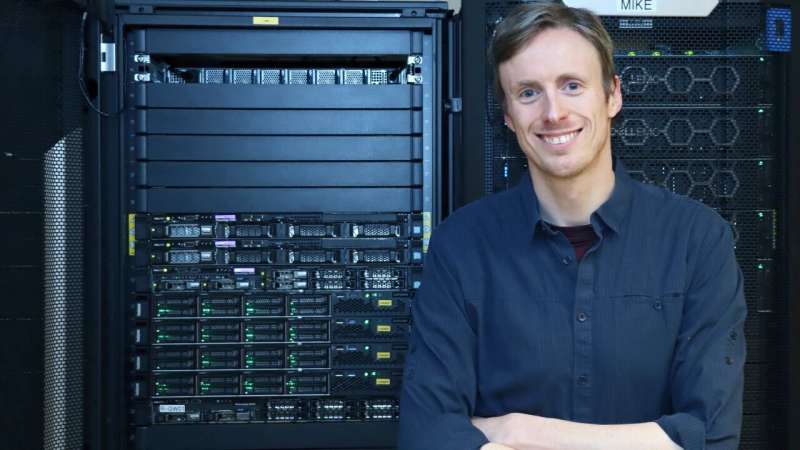World-first online portal allows inside study of a data center

A successful collaboration between Umeå University and Ericsson Research in Lund has now resulted in an online portal that makes it possible to peek inside the processes in a data center, in real-time.
"Researchers now have access to high-quality data sets and the ability to develop the next generation of energy-efficient cloud services," says Paul Townend, Associate Professor in Computing Science and project manager of the WARA Common Information Bridge.
We are increasingly dependent on so-called "cloud services," where what we do in apps and online is managed and stored remotely, in dynamic facilities, that consume vast amounts of energy—it is estimated that data centers will use up to 9% of the world's power by 2030.
But how well functioning and efficient are these data centers and what can be improved? So far, this has been almost impossible for researchers to answer.
Until now.
Exclusive online portal
The online portal, Ericsson Research Datacenter, enables the production, filtering, and extraction of large volumes of operational data from a cloud facility—in real time. It now opens the door for scientists to "peek inside" a data center and develop new autonomous management systems, for instance, to better predict and plan loads and capacities, detect faults and failures, and develop methods for higher energy efficiency.
"Ericsson Research Datacenter provides access to a unique and comprehensive set of active operational data, unmatched anywhere in the world. We have created the conditions for developing the next generation of cloud facilities," says Paul Townend, Associate Professor at the Department of Computing Science at Umeå University.
Complex and inefficient
A data center must be capable of managing, anticipating, and responding to changes in demand and environment. These cloud services must react quickly to errors or intrusions and self-optimize to be as efficient as possible.
"Systems are so complex that human management is impossible. Instead, autonomous command and control mechanisms are in place at all levels, but they're inefficient," Townend says.
"A data center can require as much electricity as a city of 60,000 people. Another problem is that they are often highly underutilized—it is common for only 20% of a data center to be in use at any one time, because many operators simply don't know when a spike in demand might occur but need to overprovision to ensure they can meet demand and not hurt their reputation," Townend says.
High-quality data sets
The data made available is "full stack," enabling access to correlated data from hardware and facility systems to network traffic information and software workload metrics.
"This means that you can start looking at how best to re-allocate and streamline resources without losing capacity. This has not been possible for academic researchers because data sets of sufficient quality have not been available, and we need operational data that can be used for learning, reasoning, and prediction," Townend says.
"Among other things, we have ensured that the portal properly collects metric and log data and made certain that this data can only be accessed by users with appropriate access privileges and does not contain any confidential information," says Townend.
Access to the portal is primarily granted to researchers within WASP, Sweden's largest ever individual research program. Here, you can find world-leading researchers with cutting-edge expertise in AI, autonomous systems, and software of critical strategic importance, funded by the Knut and Alice Wallenberg Foundation.
"The WCIB project is now setting the foundation for the next generation WASP data infrastructure, and the potential for a future larger collaborative platform involving more enterprises. The interaction with Prof. Townend has been very productive and rewarding. We are very grateful for the bridge project funding from WASP," says Johan Eker, Adjunct Professor and Principal Researcher at Ericsson Research.
Jon Leijon, Research Engineer at the Department of Computer Science, has been involved in the development of the new web-based portal system.
"The portal supports secure log-in, a graphical query building interface (so no knowledge of data query languages is required by users), interactive data visualization, and the ability to download datasets in both CSV, JSON and text log format," Townend says.


















